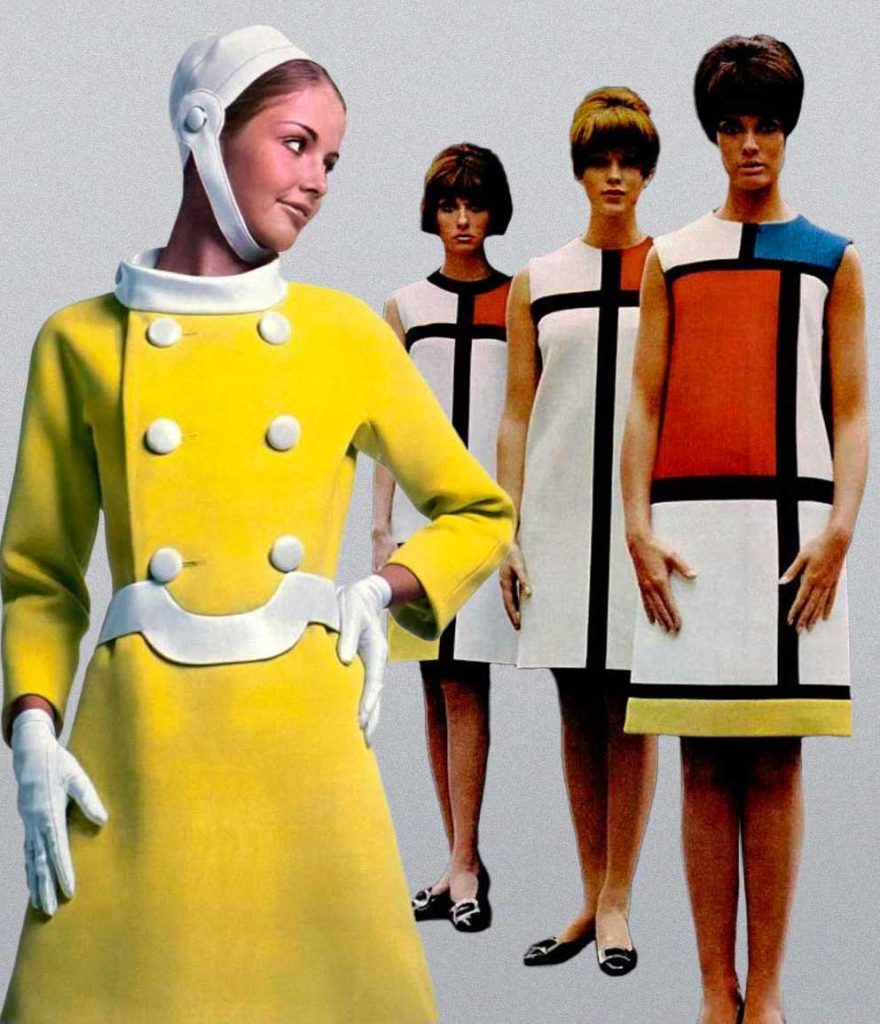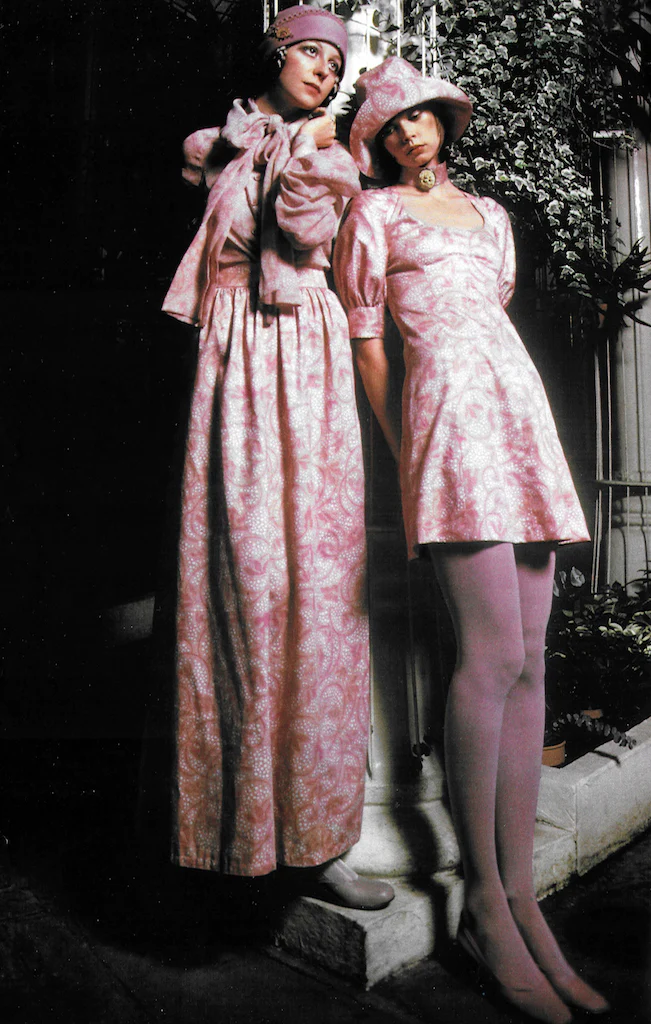The allure of 1940s fashion continues to captivate fashion enthusiasts and historians alike, with its timeless elegance and enduring influence on contemporary style. The distinct aesthetic of this era, characterized by tailored silhouettes, feminine details, and a touch of wartime practicality, has left an indelible mark on the world of fashion. From the iconic 1940s dress patterns to the resurgence of vintage and retro clothing, the fascination with this period’s sartorial choices remains strong. In this section, we will delve into the rich history of 1940s fashion and explore its significance in today’s ever-evolving fashion landscape.
The Characteristics and Silhouettes of 1940s Dress Patterns
The 1940s was a remarkable era in the history of fashion, characterized by distinct dress patterns that reflected the prevailing trends of the time. From dresses with shoulder pads to tea dresses and shirtwaist dresses, the silhouettes of this decade were both elegant and practical.
One prominent feature of 1940s fashion was the use of shoulder pads in women’s attire. This trend emerged as a result of World War II, when women took on more active roles in society and needed clothing that conveyed strength and authority. Dresses with shoulder pads created a structured look, accentuating the shoulders and creating a powerful silhouette.
Another popular style during this period was the tea dress. These dresses were typically made from lightweight fabrics such as chiffon or rayon and featured feminine prints or floral patterns. Tea dresses were designed to be worn for informal occasions, such as afternoon tea parties or social gatherings. They often had a fitted bodice, defined waistline, and flared skirt that fell below the knee.
Shirtwaist dresses also gained popularity in the 1940s. Inspired by men’s shirts, these dresses featured a button-down front and collars. They offered a more tailored look compared to other styles of the time, with a fitted waistline that emphasized femininity. Shirtwaist dresses were versatile and could be worn for both casual and formal occasions.
Additionally, A-line skirts became increasingly fashionable during this decade. This silhouette featured a narrow waistline that gradually flared out towards the hemline, creating an “A” shape when viewed from above. A-line skirts offered comfort while still maintaining an elegant appearance.
The Materials and Fabrics Used in 1940s Dress Patterns
The 1940s marked a significant era in fashion, with dress patterns showcasing a wide range of materials and fabrics. Vintage fabric choices during this time were diverse, reflecting the unique style and preferences of the era. From rayon fabric to cotton prints, silk crepe de chine to wool blends, these materials played a crucial role in shaping the fashion landscape of the 1940s.
Rayon fabric was particularly popular during this period. Known for its versatility and affordability, Rayon offered a wide range of options for dress patterns. It was often used for everyday wear as well as more formal attire. Its lightweight and breathable nature made it suitable for various styles and occasions.
Cotton prints also dominated the dress patterns of the 1940s. With their vibrant colours and intricate designs, cotton prints added charm and character to garments. These fabrics were commonly used for day dresses, blouses, and skirts, providing comfort without compromising on style.
For more luxurious options, silk crepe de chine was a go-to choice in the 1940s. This delicate fabric exuded elegance and sophistication, making it ideal for evening gowns or special occasion dresses. Its smooth texture draped beautifully on the body, creating an effortlessly glamorous look.
Wool blends were another prevalent choice during this period. These fabrics offered warmth and durability while maintaining a refined appearance. They were often used for tailored suits or winter coats, providing both style and functionality.
Popular Styles and Designs in 1940s Dress Patterns for Different Occasions
The 1940s was a decade that brought significant changes to fashion, with various styles and designs emerging for different occasions. From daytime dress patterns to evening gown patterns, wedding dress patterns to beachwear designs, this era showcased a diverse range of options for women’s attire.
Daytime dress patterns in the 1940s often featured practical and feminine designs. A popular style during this time was the shirtwaist dress, which incorporated a button-down front and a cinched waistline. These dresses were commonly worn for casual outings or work-related activities.
For more formal occasions, evening gown patterns took centre stage. Glamorous and elegant, these gowns featured floor-length silhouettes with intricate detailing such as beading or lace embellishments. Women would often accessorize their evening gowns with gloves and statement jewellery to complete the sophisticated look.
Wedding dress patterns in the 1940s reflected the prevailing trends of the time. Brides typically opted for modest yet romantic styles, characterized by fitted bodices and full skirts made from luxurious fabrics such as satin or lace. These wedding dresses exuded timeless elegance and grace.
When it came to beachwear designs, the 1940s embraced a sense of fun and playfulness. Swimsuits featured high-waisted bottoms paired with halter tops or bandeau-style tops adorned with ruffles or bows. Beach cover-ups were also popular, ranging from sarongs to lightweight dresses that provided both style and sun protection.
Tips for Sewing with Authentic 1940s Dress Patterns Today
When it comes to sewing with authentic 1940s dress patterns today, there are several tips and techniques that can help ensure a successful and authentic outcome. From vintage sewing techniques to fabric sourcing tips, as well as advice on working with vintage notions and trims, and dress fitting, this section will provide valuable insights for those looking to recreate the style of the 1940s.
To start, understanding and utilizing vintage sewing techniques is essential. These techniques may differ from modern methods, so it’s important to familiarize oneself with them in order to achieve an accurate result. Additionally, fabric sourcing plays a crucial role in recreating an authentic 1940s look. Knowing where to find period-appropriate fabrics can make all the difference in achieving the desired aesthetic.
Furthermore, incorporating vintage notions and trims is key to capturing the essence of a 1940s dress pattern. Identifying suitable options for buttons, zippers, lace trims, and other embellishments will enhance the overall authenticity of the garment.
Lastly, ensuring proper fit is vital when working with any dress pattern. Understanding how to adjust patterns for different body types or making necessary alterations can greatly improve the final result. This section will provide insightful advice on achieving a flattering fit that reflects the fashion standards of the 1940s.
By following these tips for sewing with authentic 1940s dress patterns today – including embracing vintage sewing techniques, carefully selecting appropriate fabrics and notions, and mastering dress fitting – enthusiasts can confidently recreate this iconic era’s style while maintaining historical accuracy.
Celebrating the Timelessness of 1940s Dress Patterns: How to Incorporate Them into Your Modern Wardrobe
The fashion trends of the 1940s continue to captivate and inspire us even in the modern era. The timelessness of 1940s dress patterns allows us to incorporate them seamlessly into our contemporary wardrobes, adding a touch of vintage elegance and charm.
While fashion may evolve over time, certain styles from the past remain eternally chic. The 1940s dress patterns are a perfect example of this enduring appeal. By incorporating these patterns into your modern wardrobe, you can effortlessly create a unique and timeless look that stands out from current trends.
Embracing vintage fashion not only pays homage to the past but also allows for creative expression in today’s world. Whether it’s a classic A-line silhouette or a sophisticated pencil skirt, these dress patterns offer versatility and sophistication that can be adapted to suit any occasion.
To incorporate 1940s dress patterns into your modern wardrobe, consider pairing them with contemporary accessories or layering them with modern pieces. This juxtaposition creates an interesting fusion of old and new, resulting in an ensemble that is both nostalgic and current.
By celebrating the timelessness of 1940s dress patterns, you can embrace your own unique style while paying tribute to the fashion icons of yesteryears. Let these vintage-inspired designs elevate your modern wardrobe with their enduring charm and elegance.


